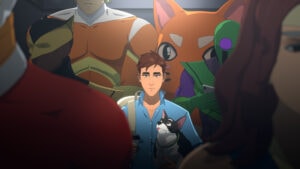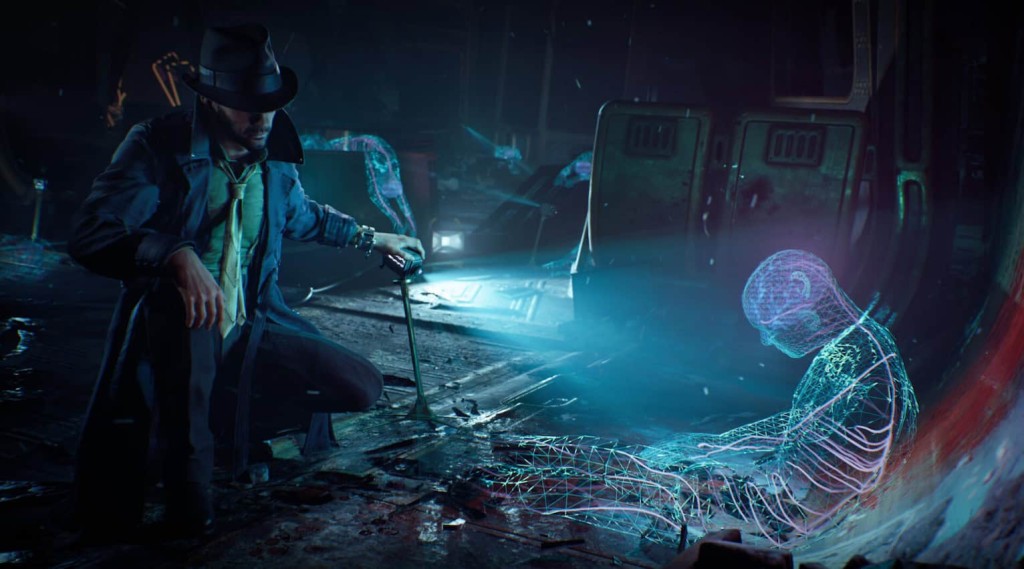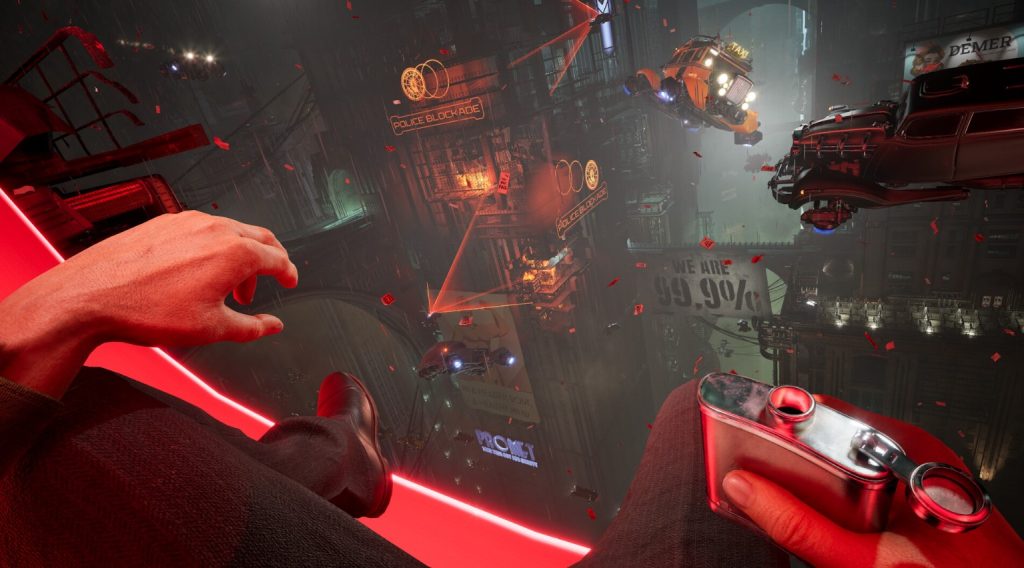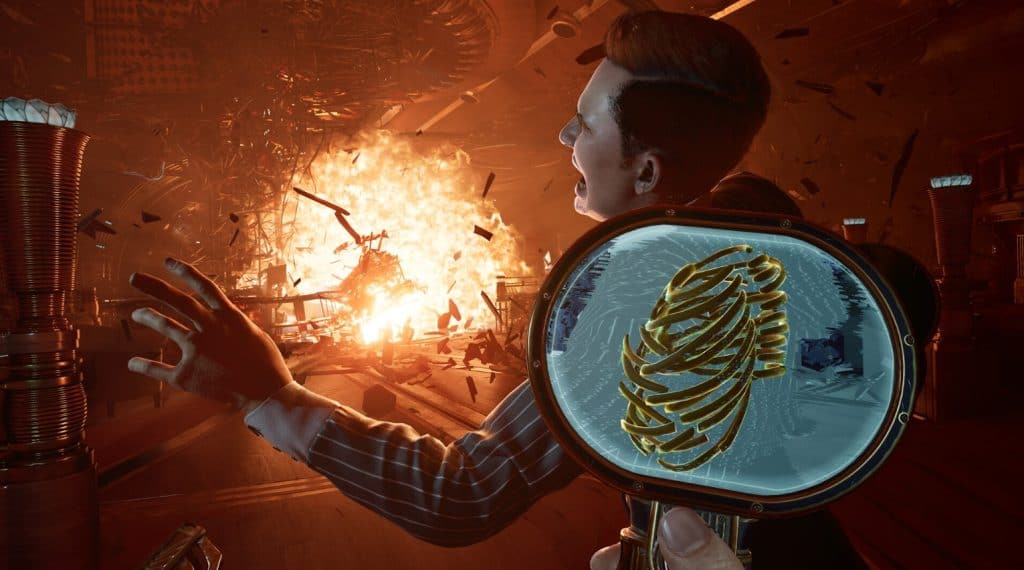There’s no way of looking at Nobody Wants to Die and not think of Altered Carbon. The premise of being able to switch bodies isn’t a new thing but rarely does it explore the actual psychological and societal effects this has when just about everyone can do this. Made even more uncomfortable that it’s now mandatory and your body is legally part of the government.
Dystopian settings like the one in Nobody Wants to Die always fascinate me. Mostly because they offer a precaution to what could happen if humanity were ever given the opportunity to make several wrong choices. The game is set in a world where mankind has, in large, found a way to keep death at bay by switching bodies thanks to discovering ichorite. This is a world heavy with pollution, corruption, and decay.
Nobody Wants to Die is developed by Polish developer Critical Hit Games. This seems to be their very first work and its published by PLAION. This review will contain aspects of the game without spoilers. You play as James, a former policeman, working on a case to solve the murder of an important politician.
Nobody Wants to Die on the surface is a detective game. However, I’d classify it more as an interactive movie with some detective elements. It’s never about figuring out what happened for yourself as it is going to the right place and then using the right tool. But it does look cool and you are allowed to make choices that change the outcome of the story.
What surprised me the most was how lonely the supposed overcrowded futuristic city of New York was. While you’re always talking to someone via some form of communication, you can’t see them for almost the entire game. It’s a stark contrast from other cyberpunk settings where it’s almost always overcrowded. You spend most of the time retracing dead people’s last moments that Manhattan feels more machine than human true to the genre.
Of course, because most communications happen without face-to-face contact, the voice acting has to carry the game. Nobody Wants to Die does a passable job but not a phenomenal one for the most part. Although some of James’ monologues had me really invested, there was never a point where I started to care too much about the characters. Not helped by the fact that we don’t really get to meet and talk to most people face-to-face.
Despite the gun our protagonist carries on his person, this is not a shooter. You’ll spend your time walking around crime scenes before putting the pieces together on the floor in a minigame where you have to connect which evidence answers what question. When you’re not doing any of these, you’re spending time chewing the scenery.
Nobody Wants to Die does an amazing job with the aesthetic of futuristic New York. The atmosphere and vibe make the whole city feel like an interconnected set of cables rather than a living and breathing city. You can’t see the sky because of how tall the buildings are and there’s so much pollution everywhere the citizens are required to decontaminate every time they head home.
So much of what you do in Nobody Wants to Die doesn’t make you feel like a detective. You roam around the crime scenes until you get to a specific area where the game wants you to use one of your tools. There’s no need to figure out which one because Nobody Wants to Die will automatically have you pull out the necessary tool at the press of a button.
When I first booted up Nobody Wants to Die, I expected somewhere between Altered Carbon, Blade Runner, Bioshock, and LA Noire all sprinkled into one neat little package. However, it almost feels like it’s emphasizing style over substance. There’s barely any real detective work to do.
While the gadgets that James has have really neat visual gimmicks, they also provide an easy out to much of the work. They’re more graphical spectacles than actual game mechanics. The real joy comes from how much you can influence the story by picking up things that weren’t part of the main objective without using these gadgets.
I had a hard time getting invested in the actual mystery at first. James’ involvement in solving a string of murders of important people never truly felt captivating. It was because the crime itself didn’t do anything interesting nor was I attached to any of the victims that I couldn’t help but feel disconnected from the case. Where the story of Nobody Wants to Die becomes interesting is during times it explores the personal trauma that James feels of having to switch from one body to the next.
Nobody Wants to Die is also a bit on the short side. It’s about 5 hours long and feels more like an interactive movie than a video game. On the bright side, it is replayable due to having multiple choices that influence the ending of the story. This also means the game has different endings that you can unlock. Unfortunately, there’s no manual save or chapter select so you’ll have to start back to the beginning if you want to make new choices.
Playing the game on the PS5 provides nothing short of a gorgeous visual experience. However, it feels more like looking into the game’s potential rather than what it is. Without all the special effects and graphics, I’m not so sure if Nobody Wants to Die is worth playing. It certainly makes for an interesting film with some philosophical debates about immortality but it doesn’t really translate to being a game too well.
I can’t quite say I’d recommend Nobody Wants to Die, not unless you’re heavy on film noir. Other than that, you most likely wouldn’t find it memorable. It’s gorgeous on the surface but deep down lacks intricate game mechanics to make it an interesting and worthwhile experience. If you love interactive movies, then you may want to give this one a shot but you should know what you’re getting yourself into.







